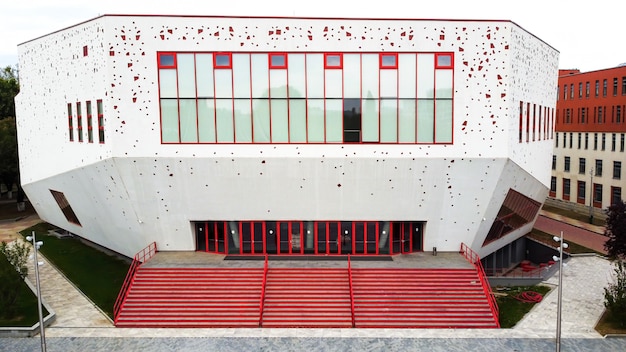
Curious about the best places to visit in Romania? Romania is one of Europe’s most traditional countries, featuring beautiful rolling fields and pristine countryside. It’s a destination with a lot to offer: breathtaking landscapes, stunning castles, charming cities and towns, coastal resorts, and some of the finest ski resorts in Central and Eastern Europe.
Romania’s rich history and cultural influences include deep-seated religious and superstitious beliefs, as well as dark mythology. The country has been the backdrop for many books and movies, inspired notably by one of its most famous historical figures—Vlad III Dracula, also known as Vlad the Impaler. His fierce and sometimes brutal reputation has captured the imaginations of storytellers worldwide. Because of this, several locations in Romania connected to Vlad Dracula have become popular tourist spots.
Interested in planning a trip to Romania but wondering what to see? Here’s a detailed list of seven must-visit places in Romania.
First, there’s Bucharest, the capital city and commercial center of Romania, often called the “Paris of the East”. It boasts vibrant nightlife and caters to all kinds of tourists, from budget backpackers to luxury travelers. Bucharest is known for its diverse architecture, featuring a blend of neo-classical, Art Nouveau, Bauhaus, art deco, communist-era, and modern buildings. One of its most iconic landmarks is the Palatul Parlamentului (Palace of Parliament), a colossal communist-era building with 1100 rooms and a vast floor area, making it the second-largest administrative building in the world after the Pentagon. Another noteworthy structure is the People’s Salvation Cathedral, an Orthodox church still under construction in Bucharest. It is set to be the tallest and largest Orthodox church by volume and area in the world.
Next on the list is Cluj-Napoca, Romania’s second-largest city located in Transylvania. It’s renowned for its universities, lively nightlife, and historical landmarks from Saxon and Hungarian rule. The city teems with bohemian cafes, gardens, and a mix of Gothic, Baroque, and medieval buildings. Cluj-Napoca’s artsy and relaxed vibe attracts many students and artists.
Sinaia, a prominent ski and snowboard destination, is nestled in the Bucegi Mountains and surrounded by ski trails. Known for its affordability, Romania is gaining recognition as one of Europe’s top skiing spots. The breathtaking scenery of the Carpathian Mountains rivals that of Switzerland. Sinaia also houses the beautiful Peleș Castle, a Neo-Renaissance structure built between 1873 and 1914. In summer, visitors can enjoy hiking trails and a cable car ride that offers stunning views of the surrounding mountains.
Romania’s Painted Monasteries are a testament to its rich cultural heritage. These world-famous monasteries from the Byzantine era, built in the 15th and 16th centuries, feature colorful frescoes depicting realistic human figures both inside and outside. Each monastery in Bukovina is dedicated to a saint and has been a UNESCO World Heritage site since 1993.
Sibiu is another cultural gem, recognized for its remarkable architecture in the Upper and Lower town areas. With colorful houses lining cobblestone streets, many consider Sibiu one of the prettiest and most pleasant cities. Forbes even ranked Sibiu’s old city as Europe’s eighth-most idyllic place to live in 2008.
Then there’s Bran Castle, often referred to as Dracula’s castle outside Romania. It serves as a national monument and landmark. Although commonly associated with Vlad III Dracula, also known as Vlad the Impaler, it was never his actual residence. The historic Dracula is more closely linked to the Wallachia region rather than Transylvania. Nevertheless, Bran Castle is a fascinating place to visit, boasting a museum that displays art and furniture collected by Queen Marie of Romania. At the foot of the hill, there’s an open-air museum featuring traditional Romanian cottages, barns, and water-driven machinery.
Lastly, Sighisoara stands out as one of Europe’s most beautiful medieval towns and is the birthplace of Vlad III Dracula. Surrounded by picturesque hilly countryside, Sighisoara’s well-preserved medieval citadel is a UNESCO-protected site. The ancient city walls remain intact, and nine towers still stand. Visitors can stroll through the historical center’s cobblestone streets lined with 16th-century houses and untouched churches.
And a final note: Romanians are fond of meat, so prepare for hearty and substantial meals when visiting.